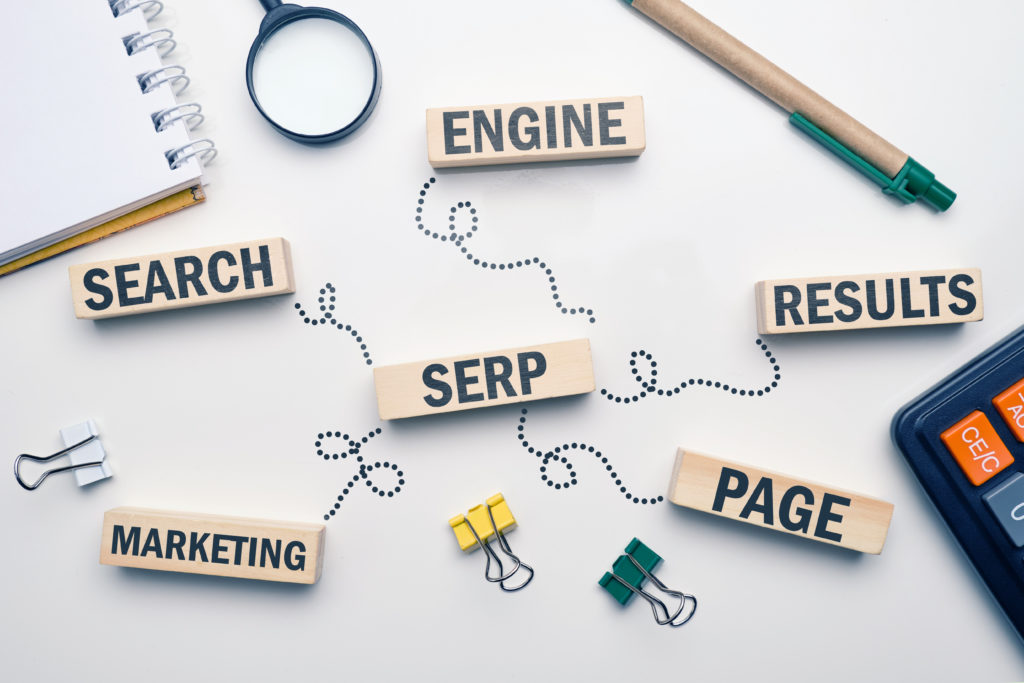Google Ads: How They Work and What You Should You Expect
According to Hootsuite, people search with Google 3.5 billion times a day. This gives you a lot of opportunities to increase leads and conversions by getting your brand in front of a lot of people. One of the most effective ways to get your company in front of your target audience is with Google Ads.
It’s not an exaggeration to say that Google Ads may be one of the best things that you can do for your business. It gives you the opportunity to promote your products and services to your audience when they search using relevant keywords. For example, if the keywords “RV storage, Your Town” are used on your website, prospective customers searching for RV storage in your location will be directed to your search engine results page (SERP).
Before we move on, it’s important to realize that Google Ads is complicated, doesn’t show results overnight, and requires the expertise of a skilled team of marketers. The talented team at FineView Marketing can guide you seamlessly through the process from the beginning all the way to your desired outcome.
First things first. Let’s break down Google Ads into smaller nuggets and see how it can work to supercharge your business.
How Google Ads Work and What You Should Expect

What Is Google Ads?
Google Ads is a paid online advertising platform offered by Google. As mentioned above, when a prospect searches using relevant keywords, they get the results on a SERP. These results can include a paid ad that targets those specific keywords. If you look at a query using the example, “self storage,” you’ll see that all of the ads are at the top of the SERP. They’re almost identical to all of the search results with the exception of the bolded “Ad” which appears first.
This is beneficial for the advertiser because the top results on Google get the majority of search traffic. Keep in mind, however, that purchasing advertising on Google doesn’t ensure your ad has the top spot. You’re only one of many marketers who are competing for the same keywords through Google Ads.
What to Expect from Google Ads?
A Google Ad campaign requires patience and persistence. Why? Because Google has to collect and process a significant amount of data to be effective. The plan will take at least 3 months to fully develop and then 4 to 12 months to evolve into a solid campaign.
Your Google Ads “Learning” Period
When you start a new campaign your account status is set to “learning.” In order to keep Google from triggering your “learning” status repeatedly during this period, don’t make the following updates:
- Changes to bid setting strategy
- Changes to conversion actions
- Implementation of a smart bidding strategy
- Changes to the campaign’s composition
- Budget changes larger than 20% of your current budget
- Pausing and enabling a campaign
During this learning period, your cost-per-acquisition and costs-per-click will be higher and conversion rates will decrease. Don’t panic. This happens because Google algorithms need to understand what is proven to work and will drive results. Once this period is over, you’ll be able to safely update and change ads.
The First Seven Days
Google begins by reviewing and approving your account. Subsequent to approval, it takes another 7 days to gather data about your business, learn about your desired topic, and examine your target audience. This process could take longer depending on the size and complexity of your business.
Google will not spend your full budget initially. In this period, you’ll see only a small percentage of the impressions and clicks that you expect. A comfortable objective is 15 clicks per day per ad group (not campaign) and 200-300 clicks on the keywords per month. If this isn’t happening you should revisit your budget and campaign setup.
After the First Week
Google is still working and will continue to collect data and present your ads, but you should not expect to be flooded with leads. It takes approximately 2-4 weeks for your Google Ads campaign to gain traction.
As mentioned above, it’s not a good idea to make too many changes to your ad account during this learning period. Too many updates will force Google to redo the process.
Another key point to remember is that your click-through rate (CTR) should not be ranked yet.
Click-Through-Rate
Your click-through-rate (CTR) determines how relevant your Ad Campaign is to your target audience. At this point of the “learning” period, it’s too early for Google to accurately grade your campaign. It would put your business in a position of having to compete with already-established businesses that have higher scores than you.
When the “learning” period is complete, you’ll be able to update your ad in order to have higher conversions and a higher quality score.
After the Learning Period
When the algorithm has collected sufficient data, your status will change to “eligible.” Now you can make the following optimization changes to the Google ad campaign:
- Ad copy
- Target keywords
- Negative keywords
- Target audience
- Location
As each optimization takes place, it will take 1-2 weeks to see an impact. This is all part of the three-month process that was mentioned earlier. Remember, it takes time for Google’s algorithm to adjust to each change. The amount of time can vary based on the number of changes and the type of advertisement.
Now that you’ve allowed Google the time to become an expert on your business, you’ll start to see results.
Final Thoughts
It’s critical that you understand this process and how it works. What’s even more important is that you use a marketing agency like FineView Marketing. Their team understands how to determine what your potential customers are looking for and how to monitor and modify your campaign to help consumers find your business. Don’t expect greatness overnight. An investment in your future takes time and patience.


